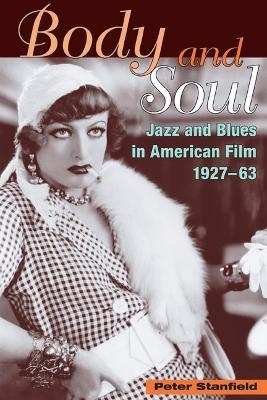
Body and Soul
Jazz and Blues in American Film, 1927-63
Seiten
2005
University of Illinois Press (Verlag)
978-0-252-07235-2 (ISBN)
University of Illinois Press (Verlag)
978-0-252-07235-2 (ISBN)
Features how the "dark continent" of blues and jazz provided Hollywood with a resonant resource to construct and negotiate the boundaries of American cultural identity. This book contains new work on blackface minstrelsy in early sound movies, racial representation and censorship, torch singers and torch songs, burlesque and strippers, and more.
The minstrel show and striptease played an indelible role in early mass culture and influenced the popular culture that followed. Peter Stanfield focuses on Hollywood to explore this phenomenon. The movies used blackface minstrelsy to represent an emerging urban American theatrical history while American film at the end of the studio era used the image of the burlesque dancer and stripper to represent urban decay. Stanfield considers the representation of American urban life in jazz, blues, ballads, and sin-songs and the ways film studios exploited this range of so-called scandalous music. Stanfield’s analyses of standards like "Frankie and Johnny” and "St. Louis Blues” stand beside original thinking on blackface minstrelsy in early sound movies, racial representation and censorship, torch singers and torch songs, burlesque and strippers, the noir cityscape, the Hollywood Left, and hot jazz.
The minstrel show and striptease played an indelible role in early mass culture and influenced the popular culture that followed. Peter Stanfield focuses on Hollywood to explore this phenomenon. The movies used blackface minstrelsy to represent an emerging urban American theatrical history while American film at the end of the studio era used the image of the burlesque dancer and stripper to represent urban decay. Stanfield considers the representation of American urban life in jazz, blues, ballads, and sin-songs and the ways film studios exploited this range of so-called scandalous music. Stanfield’s analyses of standards like "Frankie and Johnny” and "St. Louis Blues” stand beside original thinking on blackface minstrelsy in early sound movies, racial representation and censorship, torch singers and torch songs, burlesque and strippers, the noir cityscape, the Hollywood Left, and hot jazz.
Peter Stanfield is Emeritus Professor of Film at the University of Kent. His books include Hoodlum Movies: Seriality and the Outlaw Biker Film Cycle, 1966-1972 and Horse Opera: The Strange History of the 1930s Singing Cowboy.
| Erscheint lt. Verlag | 15.6.2005 |
|---|---|
| Zusatzinfo | 16 black & white photographs |
| Verlagsort | Baltimore |
| Sprache | englisch |
| Maße | 152 x 229 mm |
| Gewicht | 399 g |
| Themenwelt | Kunst / Musik / Theater ► Film / TV |
| Kunst / Musik / Theater ► Musik ► Jazz / Blues | |
| Sozialwissenschaften ► Kommunikation / Medien ► Medienwissenschaft | |
| ISBN-10 | 0-252-07235-9 / 0252072359 |
| ISBN-13 | 978-0-252-07235-2 / 9780252072352 |
| Zustand | Neuware |
| Haben Sie eine Frage zum Produkt? |
Mehr entdecken
aus dem Bereich
aus dem Bereich
zur politischen Ästhetik des Jazz
Buch | Hardcover (2023)
Phillip Reclam (Verlag)
38,00 €
Die Geschichte des Jazz in Deutschland
Buch | Softcover (2021)
Reclam, Philipp (Verlag)
20,00 €


